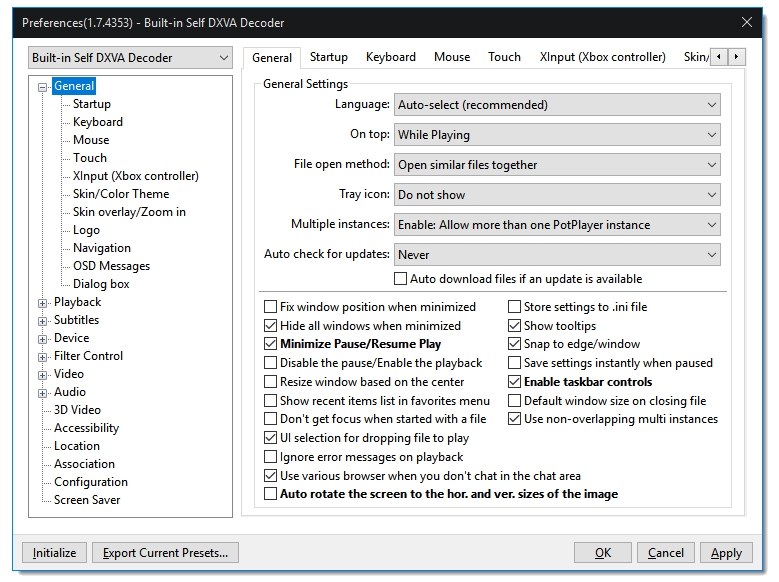

- #TOP BOTTOM 3D VIDEO PLAYER FOR PC DRIVER#
- #TOP BOTTOM 3D VIDEO PLAYER FOR PC FULL#
- #TOP BOTTOM 3D VIDEO PLAYER FOR PC SOFTWARE#
- #TOP BOTTOM 3D VIDEO PLAYER FOR PC PC#
The dongle usually also drives a pair of LCS glasses. The video signal will then be an alternating sequence of left and right "frames". In the first frame it blacks out the odd numbered lines, and in the next frame it blacks out the even numbered lines, and this sequence then repeats. The dongle actively blacks out alternate lines of the video signal. A dongle plugs into the VGA port of the computer and the monitor plugs into the back of the dongle. you don't need a high speed video card to display flicker-free stereoscopic images.Ī row-interleaved 3D image is displayed by the video card in progressive-scan video mode (i.e.
#TOP BOTTOM 3D VIDEO PLAYER FOR PC SOFTWARE#
#TOP BOTTOM 3D VIDEO PLAYER FOR PC FULL#
(which used to be the bottom half of your screen) as a full screen Of the video signal (which used to be the top half of your screen)Īs a full screen image and then the second half of the video signal Video signal differently from before and will display the first half Puts the left image of a stereo-pair into the top half of the displayĪnd the right image of a stereo-pair into the bottom half of the display.Īfter your video card generates its normal video signal, an externalīlack box adds an extra vertical sync pulse to the video signal (at Into halves (the top half and the bottom half). Sync Doubling (or sub-fields) works by dividing your existing screen

Of odd lines from the right perspective image and the even linesįrom the left perspective image, the interlaced nature of theĭisplay will mean that first a right image will be displayed and On the screen (the odd field) and then the even lines of the imageĪre drawn on the screen (the even field). Interlacing means that first the odd lines of the image are drawn field-sequential DVDs and VHS video tapes available from various suppliers). Interlacing is probably the easiest method and is what is used in (PAL and NTSC) 3D video Row-Interleaved Image + Interlaced Display Glasses hardware can be relatively simple.Your video card memory will need to accommodate two images (the left and right) to allow the page flipping to occur.
#TOP BOTTOM 3D VIDEO PLAYER FOR PC DRIVER#

The flipping can be performed by your video card's BIOS (the better solution) or a device driver could be installed which will watch the progress of the videoĬard generating the video signal. One 'page' will hold the left perspective image and the other 'page' will hold the right perspective image. Page flipping works by flipping between two pages of video memory (of the videoĬard) every time a new image (frame) is to be displayed. It is primarily used with non-interlaced (or progressive scan) displays (which display all the lines of the frame in one go, not half/half as in interlacing). Page flipping is the highest quality method of producing time-sequential stereoscopic display. Here's a quick tutorial if you are interested how these systems work:
#TOP BOTTOM 3D VIDEO PLAYER FOR PC PC#
There are four main techniques of achieving time-sequential display with PC systems. This is called variously time-sequential, field-sequential, frame-sequential, or image-sequential. LCS 3D glasses rely on a sequence of alternating left and right images displayed on a monitor. (NB: LCD monitors are generally not compatible with LCS glasses - see below). One common 3D viewing technique is to use a pair of Liquid Crystal Shutter (LCS) 3D Glasses in combination with a CRT monitor. A large range of hardware and software is available to allow you to view stereoscopic 3D images on a PC.


 0 kommentar(er)
0 kommentar(er)
